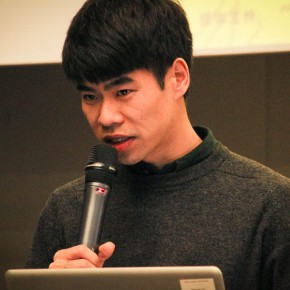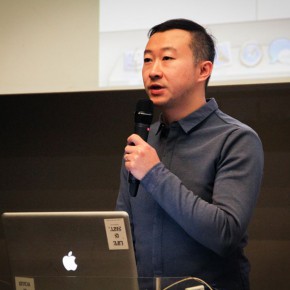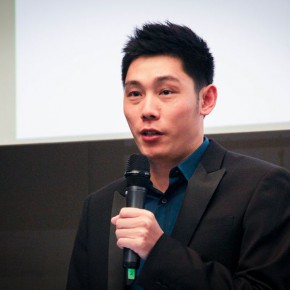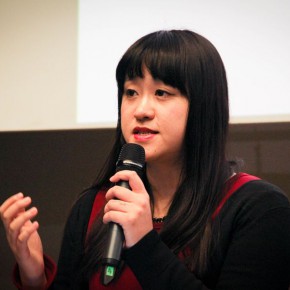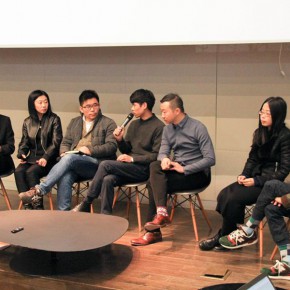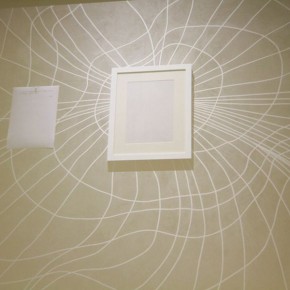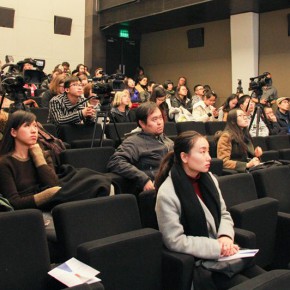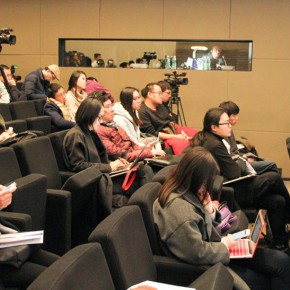
On December 19, 2015, “The Survival Strategies of Independent Spaces” International Forum (Beijing) was held at the Ullens Center for Contemporary Art, which was the last stop following the series of activities which were successfully held in Shenzhen and Manchester, continuing with the promotion of the discussion of independent art spaces. The forum is hosted by He Xiangning Art Museum, co-organized by Shenzhen Art Academy, the Ullens Center for Contemporary Art (UCCA) and CFCCA and planned by Feng Boyi, Fang Lihua, Wang Dong and Yan Liemin.
In Chinese contemporary art ecology, independent art space is not an office, but is on site, it is separated from art institutions such as art museums, galleries and the art market, it is a self-organized, wild art space, at the same time it has an inherent independence and pioneering quality, creating a variety of opportunities for voices on the art practice of experimental artists to be heard, it is one of the main forces that balances the excessive marketing and mainstream tendency in contemporary art ecology. Independent art space in China is still a vague concept, while the survival strategies and conditions are different, as Feng Boyi summarized as on the one hand, it is content with the authority, mainstream, art market, on the other hand, they lack funds, with difficult living conditions and the operational strategies are different from foreign independent spaces. The holding of the forum emphasizes the position, identity and role of independent art spaces, to promote the experience of exchange between China and foreign countries, and to discuss the innocent survival mechanism of the Chinese operation and development.
This forum in Beijing had an in-depth discussion around the “Existential conditions of Chinese independent art spaces and possibilities for future development”, “Commonality and differences between the independent art spaces built by the foreigners in China and the ones built by Chinese people at home and the state of the communication and relationship”. It invited 5 representatives of four domestic independent art institutions, including Guo Hongwei, Liang Hao, Antonie Angerer, Anna - Viktoria Eschbach and Ni Kun to offer a keynote speech, the four curators and critics Nan Nan, Xia Yanguo, Ouyang Xiao, Tang Peixian, persistently pay close attention to and research independent art spaces, representatives of the five independent art spaces Isaac Leung, Zheng Lulu, Cheng Manman, Jin Le and Chao Jiaxing participated in the dialogue and discussion.
Existential Conditions of Chinese Independent Art Spaces and Possibilities for Future Development
The founder of Secretion Space (Beijing) Guo Hongwei, the founder of ON SPACE (Beijing) Liang Hao gave the keynote address, to share their intentions and operating experiences of the founding of the independent art space. The two founders are both also artists, Guo Hongwei said that, the space was originally founded for the pursuit of a practice that was different from painting, the space was named Secretion Space because it was a place where his friends and he had the secretion of imagination, the operation of the space mainly relied on the funds raised by themselves before it was subsidized by the New Century Contemporary Art Foundation. ON SPACE is located in an apartment in Yanjiao, and also discusses marginal problems, but it is different from other spaces in that ON SPACE often repeats an exhibition, in order to offer an opportunity to reflect on the past. As for the location of the ecological chain for independent art spaces, Liang Hao thought it was a convergence of the art museum and gallery, in fact some projects could be moved to the organization and Liang said that the thinking of the operators was very important for the operational funds.
In the section on discussion and review, they mainly discussed the operational funds, audiences, and the relationship with the community. Curator Xia Yanguo said funds and the audience were the factors he often thought of, in the implementation of a project, and the fund determined the system for the project, and whether it could be extended to the social depth, whether the project was for an audience of professional circles or society was also related to the specific presentation of the exhibition project. Nan Nan said the “funds” question could improve the economic capability of the operators. For the relationship between the audience and the surrounding community, they all believed that, after all, the independent art space was not an art museum, so the research and public education were not the most important things and it was nothing more than an “experimental field” of art, so they did not need to care about the participation of social audiences. Most of the independent art spaces are founded in the surrounding community and even in the apartment, but they believed that it should avoid the “invasive quality” and keep an equal relationship with the community. When it came to the identity of the independent art space, Zheng Lulu had a vivid metaphor: the art museum was one side of the coin, and the private institutions were another side, while the independent art space was the edge of the coin. But it was also an integral part of the ecology, and a very important supplement, also introducing the art world to many new viable artists, and even the “starting point” for the whole ecological chain.
Commonness and Differences between the Independent Art Spaces Built by the Foreigners in China and the Ones Built by Chinese People at Home and the State of the Communication and the Relationship.
China’s booming art ecology and the altitude oncultural globalization also attracted many foreign artists and critics to establish independent art spaces in Beijing, such as Antonie Angerer and Anna - Viktoria Eschbach, who built the Project Space, these spaces together with the local spaces built by the Chinese have a similarity and a difference, which provides various possibilities of exchange and discussion. The Haus Space was established as early as 2006, the founder Ni Kun said it had been adhering to the operation of the international artists’ projects and insisted on the intervention and promotion of experimental art, as a curator, he thought of the boundary and new context of the art practice during the period of cultural industry, as well as the reconstruction of contemporary art and urban public space, as well as how the art institutions proactively intervened in the art production. Therefore, in addition to considering the essential problems such as the audience, funds, Ni Kun also paid close attention to the locality and function of the institution, and the relationship with the city, or the relationship with the current social context.
Feng Boyi noticed that in the past a lot of old artists were created with local experiences, while it presented a cultural nomadic phenomenon in the globalized internet era now, contemporary art creation did not simply start from local experiences, there were different cultures, nations, ethnic groups, including the results of the communication, cooperation and collision between different geopolitics. The guests that attended the dialogue also had a fierce debate on this topic and communicated with the audience.
After the end of the three events of the “Survival Strategies of Independent Spaces” international forum, the organizers will also organize and edit the documentary themed on independent art spaces, including the articles from the practitioners of the independent art spaces, as well as the critics and curators who pay attention to and research independent art spaces.
Text and photo by Zhang Wenzhi/CAFA ART INFO
Translated by Chen Peihua and edited by Sue/CAFA ART INFO


